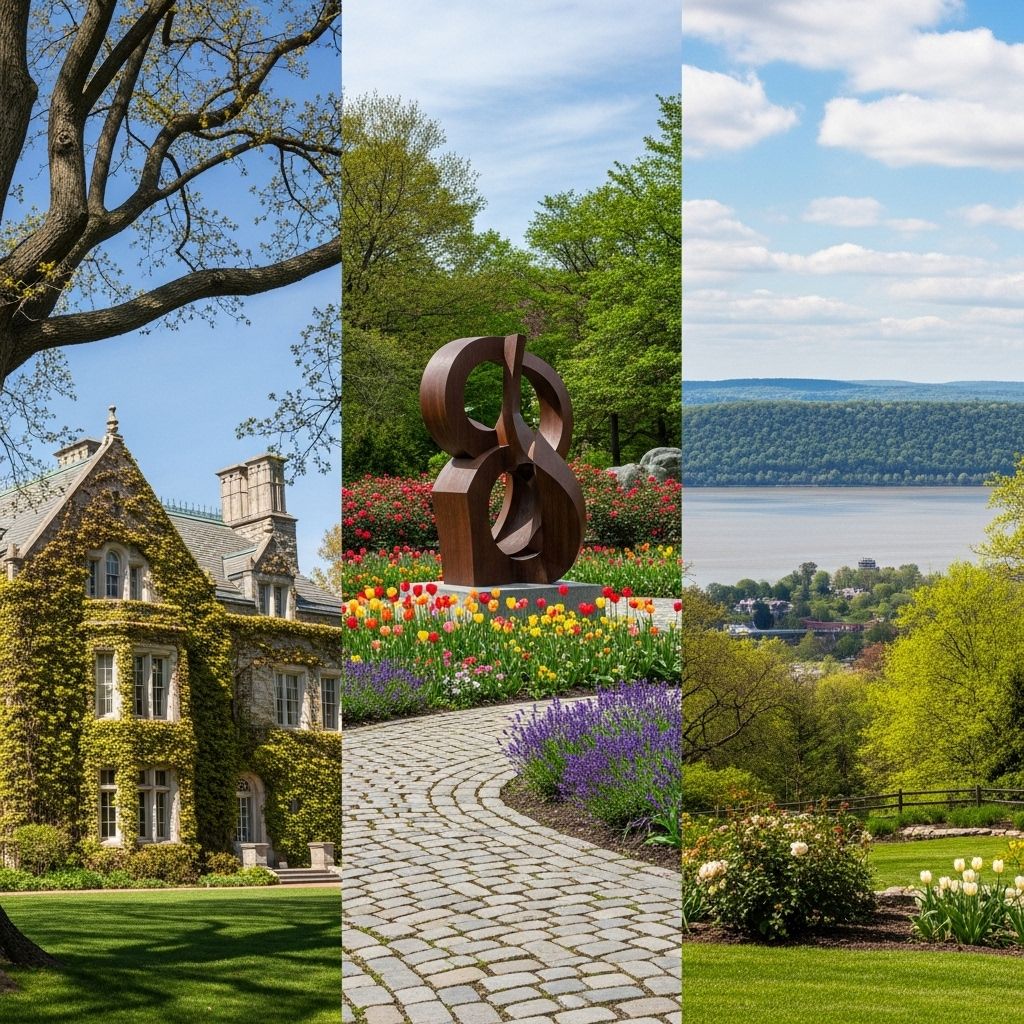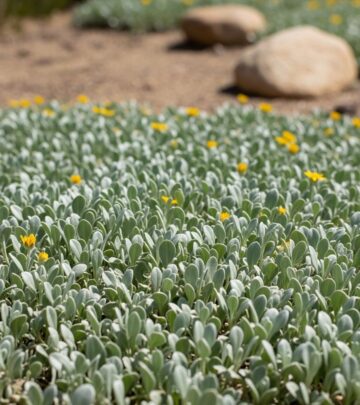Wave Hill Bronx Gardens: Your Guide To History, Art & Nature
Discover the rich tapestry of gardens, history, and cultural experiences that await at Wave Hill—Bronx’s hidden horticultural jewel above the Hudson.

Image: HearthJunction Design Team
Wave Hill: A Sanctuary of Gardens, History, and Art in the Bronx
Perched atop a scenic ridge in northwest Bronx, Wave Hill offers a rare blend of horticultural brilliance, natural beauty, and cultural vibrancy. Overlooking the Hudson River with panoramic views of the majestic Palisades, this 28-acre public garden and cultural center is a haven for visitors seeking tranquility, inspiration, and connection with nature just minutes from the pulse of New York City.
Why Visit Wave Hill?
- Renowned gardens and greenhouses meticulously curated for year-round beauty
- Expansive woodlands and trails showcasing native flora
- Historic estate homes that capture the site’s rich legacy
- Diverse cultural programming and art exhibitions
- Sweeping vistas of the Hudson River and New Jersey Palisades
A Brief History of Wave Hill
Wave Hill is steeped in geological, ecological, and social history. The rocks beneath the grounds are over a billion years old, and the dramatic cliffs of the Palisades that guests admire today began to form over 10,000 years ago. Before European settlement, this area was shaped by glacial activity and native woodlands.
In the 19th century, as New York City’s population boomed, affluent families began moving northwards, seeking serene country homes. The Riverdale neighborhood—home to Wave Hill—became a coveted enclave. Wealthy families built grand estates, and Wave Hill itself transformed from private residence to a public gem, with its legacy owed to families like the Perkins, who were instrumental in conserving the site. The estate homes on the property—Wave Hill House and Glyndor House—reflect both the site’s storied past and its ongoing cultural role today.
The Perkins Legacy and Estate Homes
The Perkins family played a central role in the development and preservation of Wave Hill, expanding its gardens and restoring its woodlands. Today, the two main estate houses:
- Wave Hill House: Now serves as an event venue and cultural hub, hosting recitals, exhibitions, and gatherings.
- Glyndor House: Functions as an art gallery, presenting contemporary art exhibitions that explore themes of nature and environment.
Gardens and Landscapes: A Living Collection
Wave Hill’s gardens are globally recognized for both classic horticultural craftsmanship and creative design. They mix perennials, annuals, shrubs, and trees from around the world, with strategic plantings that maximize color, scent, and texture throughout the four seasons. The gardens are curated by expert horticulturists, and every corner promises discovery.
Notable Garden Areas
- T.H. Everett Alpine House: Named after Thomas H. Everett, this space features alpine plants in a climate-controlled setting, highlighting rare and exquisite species from mountainous regions.
- Herb and Dry Gardens: Focused on drought-resistant plants, fragrant herbs, and Mediterranean species.
- Aquatic & Monocot Garden: A serene water garden showcasing aquatic plants and unique monocots in a tranquil setting.
- Bee Hives: Nestled in the woodland area, these promote pollinator health and ecological sustainability.
- Herbert & Hyonja Abrons Woodland: Ten acres of restored native forest with a meandering perimeter path; a window into the region’s pre-development ecology.
- Marco Polo Stufano Conservatory: Includes the cactus room, tropical room, and palm room, each displaying plants from vastly different environments.
- Perennial Flower Garden: A dynamic display of perennials providing a succession of blooms from spring through fall.
- Pergola & Hudson River Vistas: A shaded walkway adorned with climbers and flowering vines, offering breathtaking views of the Hudson and Palisades.
- Special Collections: Including the Shade Border, Elliptical Garden, and dramatic Conifer Slope—each with unique horticultural features.
- Wild Garden: A more naturalistic area where native and adaptive plants thrive, supporting local biodiversity.
Woodlands and Wildlife
Beyond formal gardens, Wave Hill is home to eight acres of woodland, providing habitat for birds, pollinators, and an array of wildlife. The Herbert & Hyonja Abrons Woodland offers shaded trails, quiet seating spots, and interpretive signage that celebrates the Bronx’s natural heritage.
Wave Hill is also a prime birdwatching destination. Over 127 species have been observed here, including ruby-throated hummingbirds, great blue herons, and bald eagles. The diversity of habitats within the gardens and woods foster an exceptional environment for both migratory and resident bird species.
Wildlife Highlights at Wave Hill
- Birding hotspot with seasonal migrations and breeding species
- Butterflies, bees, and other pollinators frequent the gardens
- Native amphibians and mammals may be seen along quiet woodland trails
Cultural Center and Arts
Wave Hill is more than a garden; it is also a vibrant cultural center. The estate hosts a robust calendar of events, exhibitions, and performances, emphasizing the intersection of art and nature.
Art Exhibitions
- Contemporary art showcased in Glyndor Gallery, engaging with environmental and botanical themes
- Outdoor art installations and site-specific works inspired by the landscape
Events and Programming
- Music concerts and recitals
- Literary readings and lectures
- Workshops and family programs
- Seasonal festivals (e.g., Harvest Festival, Winter’s Eve)
Visiting Wave Hill: Plan Your Trip
Wave Hill welcomes visitors year-round. Each season offers distinct experiences—spring’s riotous blooms, summer’s lush canopies and outdoor events, autumn’s fiery foliage, and the peaceful beauty of winter gardens. The gardens are intended as contemplative spaces, so visitors are encouraged to respect plantings and practice quiet enjoyment.
Visitor Guidelines
- Hours: Open Tuesday through Sunday (hours vary seasonally)
- Admission: Modest fee with discounts for seniors, students, and free entry at select times
- Accessibility: Many areas are wheelchair-accessible; inquire in advance for latest updates
- Food: Café located within Wave Hill House offers refreshments and light fare, often with garden views
- Photography: Permitted for personal use; professional shoots require prior arrangements
- Pets: Not allowed to protect plantings and wildlife (service animals permitted)
- Transportation: Accessible by car, Metro-North train, and New York City public transit
Tips for a Memorable Visit
- Arrive early to enjoy morning light and peaceful garden walks
- Pick up a garden map or join a guided tour for deeper insight
- Bring binoculars for birdwatching
- Check the calendar for special exhibitions or performances
- Dress for the weather—gardens can be windy along the ridge
Wave Hill in the Community
Wave Hill plays an active educational role, welcoming local schools and community groups for hands-on learning and environmental stewardship experiences. Its horticulture workshops, seasonal plant sales, and expert guest lectures make it a destination for gardeners of all backgrounds. The garden’s commitment to ecological sustainability and plant diversity serves both the community and the broader horticultural world.
Educational Programs
- School field trips and curriculum support
- Family activity sessions and garden explorations
- Public lectures, plant talks, and gardening tips
Wave Hill’s Unique Features
| Feature | Description |
|---|---|
| Location | Ridge above the Hudson River, northwest Bronx |
| Gardens | 28 acres, including specialty gardens and woodlands |
| Historic Buildings | Wave Hill House & Glyndor House |
| Art & Culture | Exhibitions, performances, educational programs |
| Wildlife | Bird sanctuary, woodland trails, bee hives |
| Visitor Amenities | Café, gift shop, guided tours |
Frequently Asked Questions (FAQs)
What are the must-see areas for first-time visitors?
Don’t miss the Alpine House, the Perennial Flower Garden, the stunning Pergola, and the woodland trails. Wave Hill House and Glyndor Gallery provide historical and cultural context, along with art exhibitions that complement the natural setting.
Is Wave Hill suitable for children and families?
Absolutely! The gardens offer nature-based play experiences, family workshops, and plenty of space for exploration. Quiet enjoyment is encouraged, making it a peaceful destination away from city crowds.
When is the best time of year to visit?
Each season offers its own delights. Spring and early summer bring colorful blooms, while fall features spectacular foliage. Winter reveals sculptural trees and peaceful garden walks, with fewer visitors and unique programming.
How accessible is Wave Hill for visitors with limited mobility?
Many paved paths and main attractions are accessible by wheelchair, though some woodland areas may be less so. Contact guest services in advance for details on current accessibility supports.
Can I bring my dog or picnic?
Pets are not permitted except for service animals, and picnicking is restricted to designated areas to preserve the horticultural environment and wildlife.
Conclusion: Wave Hill’s Enduring Allure
Wave Hill stands as a testament to the harmonious blending of gardens, history, art, and community. Its unique position atop the Hudson cliffs, its diversity of curated gardens, and its vibrant cultural life ensure that every visit offers discovery and renewal. Whether you are a garden enthusiast, a nature lover, or a seeker of art and tranquility, Wave Hill provides a sanctuary that continually enriches the fabric of New York City life.
References
Read full bio of Srija Burman












